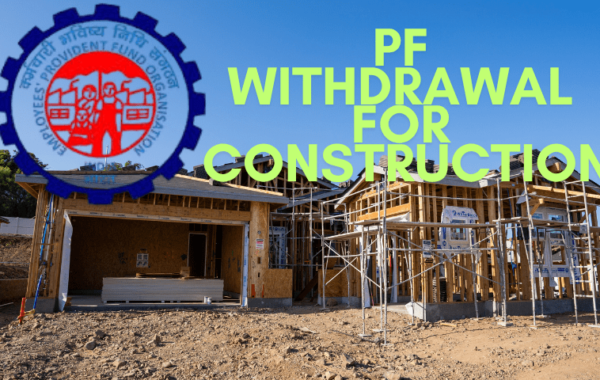
Critical Differences Between 3D Modeling and 3D Rendering
Introduction
In the ever-evolving field of architecture, technology has played a pivotal role in transforming how designers conceptualize and present their ideas. Two essential components of this technological shift are 3D modeling and 3D rendering. Although these terms are frequently used synonymously, they refer to different processes that serve unique purposes in the architectural workflow. This article will examine the crucial differences between 3D modeling and 3D rendering and their contributions to architectural design.
Understanding 3D Modeling:
3D modeling is the initial phase of constructing a digital model of a structure or building. It involves the creation of a three-dimensional model using specialized software. Architects and designers use 3D modeling to develop a spatial understanding of the design, considering proportions, scale, and form. The modeling process can be achieved through various techniques, including wireframe, surface, and solid modeling.
Wireframe modeling involves creating a skeletal structure of the design and defining its basic geometry. Surface modeling focuses on adding surfaces and textures to the wireframe, giving the model a more realistic appearance. On the other hand, solid modeling creates a complete, enclosed digital representation of the object, providing a detailed and accurate depiction of the structure.
Critical Aspects of 3D Modeling:
Geometry and Form:
- 3D modeling primarily deals with creating geometric shapes and structures.
- Architects use 3D models to explore and refine the spatial characteristics of their designs.
Visualization:
- Visualization in 3D modeling is often essential, emphasizing form and structure rather than realistic lighting and textures.
- Architects use this stage to identify design flaws, refine proportions, and communicate ideas with stakeholders.
Iterative Design:
- 3D modeling allows for quick iteration and modification of design elements.
- Designers can easily change the model to explore various design options.
Understanding 3D Rendering:
While 3D modeling lays the foundation for a digital structure representation, 3D rendering furthers the process by adding realism and visual depth to the model. 3D rendering involves the application of lighting, textures, and materials to the 3D model to create a lifelike image or animation. This step transforms the essential geometric representation into a photorealistic visualization of the architectural design.
Critical Aspects of 3D Rendering:
Realism and Detail:
- 3D rendering enhances the model’s visual appeal by adding realistic lighting, shadows, and materials.
- It provides a detailed and accurate representation of how the final structure will appear in different lighting conditions.
Texturing and Materials:
- In rendering, emphasis is placed on applying textures and materials to surfaces, making them look realistic.
- Architects can experiment with various finishes and materials to achieve the desired aesthetic.
Lighting and Atmosphere:
- 3D rendering simulates real-world lighting conditions, allowing architects to showcase their designs at different times of the day.
- It helps evaluate the impact of natural and artificial light on the building’s appearance.
Critical Difference:
Purpose:
- The primary purpose of 3D modeling is to create a digital representation of the architectural design, focusing on form and spatial relationships.
- 3D rendering, on the other hand, aims to produce visually realistic images or animations by incorporating lighting, materials, and textures.
Detail and Realism:
- While 3D modeling establishes the basic geometry, 3D rendering adds intricate details, making the visualization more lifelike and visually appealing.
- Rendering allows architects to showcase their designs with realistic lighting, shadows, and surface characteristics.
Communication and Presentation:
- 3D modeling is crucial for internal design exploration and communication within the design team.
- 3D rendering is instrumental in external communication, assisting architects in presenting their ideas to stakeholders, clients, and the public compellingly and realistically.
Workflow Integration:
- 3D modeling is an iterative process that allows designers to refine the design quickly.
- 3D rendering is often more time-consuming, especially for high-quality, photorealistic images. It is typically done once the design has reached a more finalized state.
Conclusion:
In architecture, 3D modeling and 3D rendering are integral components of the design and visualization process. While 3D modeling establishes the foundational geometry and spatial relationships, 3D rendering breathes life into the design, providing a visual representation that goes beyond the bare bones of the model.
We, CIBI+SIMEON DESIGNS, leverage the power of both processes to create immersive and convincing presentations, allowing clients and stakeholders to envision the final product with remarkable clarity. Understanding the critical differences between 3D modeling and 3D rendering is essential for architects and designers seeking to harness the full potential of these technologies in pursuing innovative and visually stunning architectural designs. Hence, being the best architectural firm in Chennai we strive to bring forth the amazing visual treat for our clients.
FAQs:
What is the primary purpose of 3D modeling in architecture?
3D modeling is the initial phase where architects create a digital representation of a structure, focusing on geometry and spatial relationships to understand the form of the design.
How does 3D rendering enhance architectural visualization?
3D rendering adds realism to the model by incorporating lighting, textures, and materials, providing a detailed and lifelike representation of the architectural design.
Can 3D modeling and 3D rendering be used interchangeably?
No, they serve distinct purposes. 3D modeling establishes the basic geometry, while 3D rendering enhances the visual appeal through realistic lighting and materials.
Why is 3D rendering time-consuming compared to 3D modeling?
3D rendering involves simulating realistic lighting conditions and applying detailed textures, making it more intricate, especially for high-quality, photorealistic images.
How do these processes contribute to the architectural design workflow?
3D modeling allows for iterative design exploration, while 3D rendering is crucial for external communication, enabling architects to present their designs realistically to clients and stakeholders.


